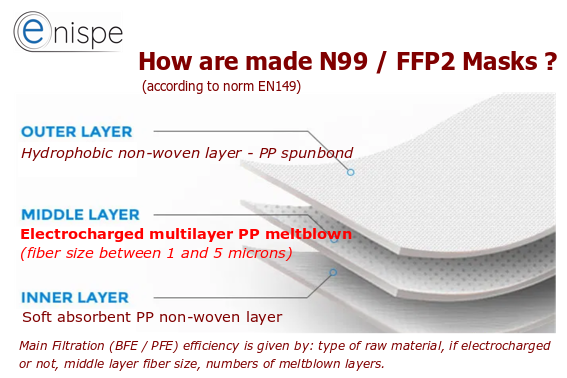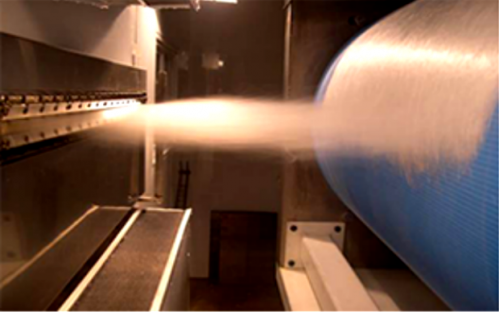Keep informed by last nonwoven business news !
(Reuters) - As European nations clamour for masks to protect their healthcare workers against the coronavirus, a niche within the synthetic fibre industry emerges as the provider of a vital component.
* WHAT FABRIC IS USED IN FACE MASKS?
An ultra fine synthetic fabric, meltblown polypropylene is the gold standard forfiltering virus-filled droplets out of breathing air in facemasks.Both the heavy duty N95 respirator masks, also known as FFP2, and simpler surgical masks require meltblown fabric.Protective layers of coarser fabric are added on both sides.
* HOW IS IT MADE?
To make the thin fleece, solid polypropylene granulates are melted and shot out of ultra-thinnozzles into a stream of hot air. This so-called meltblowing process yields a tangled mesh of fibres with 1-3 micrometres, orone thousandth of a millimetre, in diameter. An electrostatic charge is added to attract aerosols.

* WHY IS IT IN SHORT SUPPLY?
Meltblown production has emergedas an acute bottleneck because Europe has so far relied heavilyon Asian suppliers. Assembling and installing the highly specialised meltblowing machines normally takes over a year.Lead times are now being cut to a few months.Textiles lobbygroup Euratex has set up with the EU an online exchange wherecompanies post offers and requests for services and materials.That shows 32 companies are in need of various mask materials,nine of which are specifically asking for air filter material.
* REGIONAL IMBALANCES IN PRODUCTION EDANA, an association of mainly European non-woven fabric makers, says meltblown capacity in Europe is limited, while output in Asia is much larger. In China, the No. 1 producer, companies controlled by the central government are expected to reach production of over 70 tonnes of meltblown per day, or more than 25,000 tonnes per year,including new production lines of Sinopec and China NationalPetroleum Corp, state media Xinhua reported on March30. That is up from a current daily supply of 42.5tonnes.According to EDANA , production of overall non-wovens in Europe was 2.8 million tonnes in 2019 but meltblown was only afraction of that.
(Reporting by Ludwig Burger and Roxanne Liu in Beijing;Editing by Elaine Hardcastle)



1020